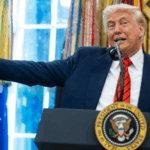In a plot twist worthy of a geopolitical thriller, China just helped two longtime rivals – Iran and Saudi Arabia – shake hands 🤝 after years of tension. The 2023 Beijing-brokered normalization deal has not only survived hot takes and skepticism but is now reshaping the Middle East’s future. Let’s unpack how this happened!
From Frenemies to Fresh Starts
Saudi-Iran relations have been a rollercoaster since 2011, crashing spectacularly in 2017 when both sides cut diplomatic ties. Think ideological clashes 💥 (Sunni vs. Shia), proxy wars in Yemen and Syria, and trust issues over nuclear rumors. By 2023, both nations were drained: Saudi Arabia’s costly Yemen campaign backfired, while Iran’s economy tanked under isolation.
Enter China: The Unexpected Peacemaker 🇨🇳
Cue China’s diplomatic mic drop 🎤! Leveraging its neutral stance and economic clout, Beijing hosted secret talks that led to the March 2023 joint statement. The result? Embassies reopened, regional tensions cooled faster than a TikTok trend, and Yemen’s civil war saw rare de-escalation.
Why This Matters for Gen Z
This isn’t just dusty diplomacy – it’s about real-world ripple effects 🌊. Fewer Middle East conflicts mean stabler oil prices, safer travel routes, and less global instability. For young professionals and investors eyeing Gulf opportunities, this detente could unlock new markets 🚀.
China’s rising role as a peace broker also signals a shifting world order. Move over, superhero movies – 2023’s most unexpected collab might just be Beijing-Riyadh-Tehran!
Reference(s):
Historic contribution of China-mediated Iran-Saudi normalization
cgtn.com




